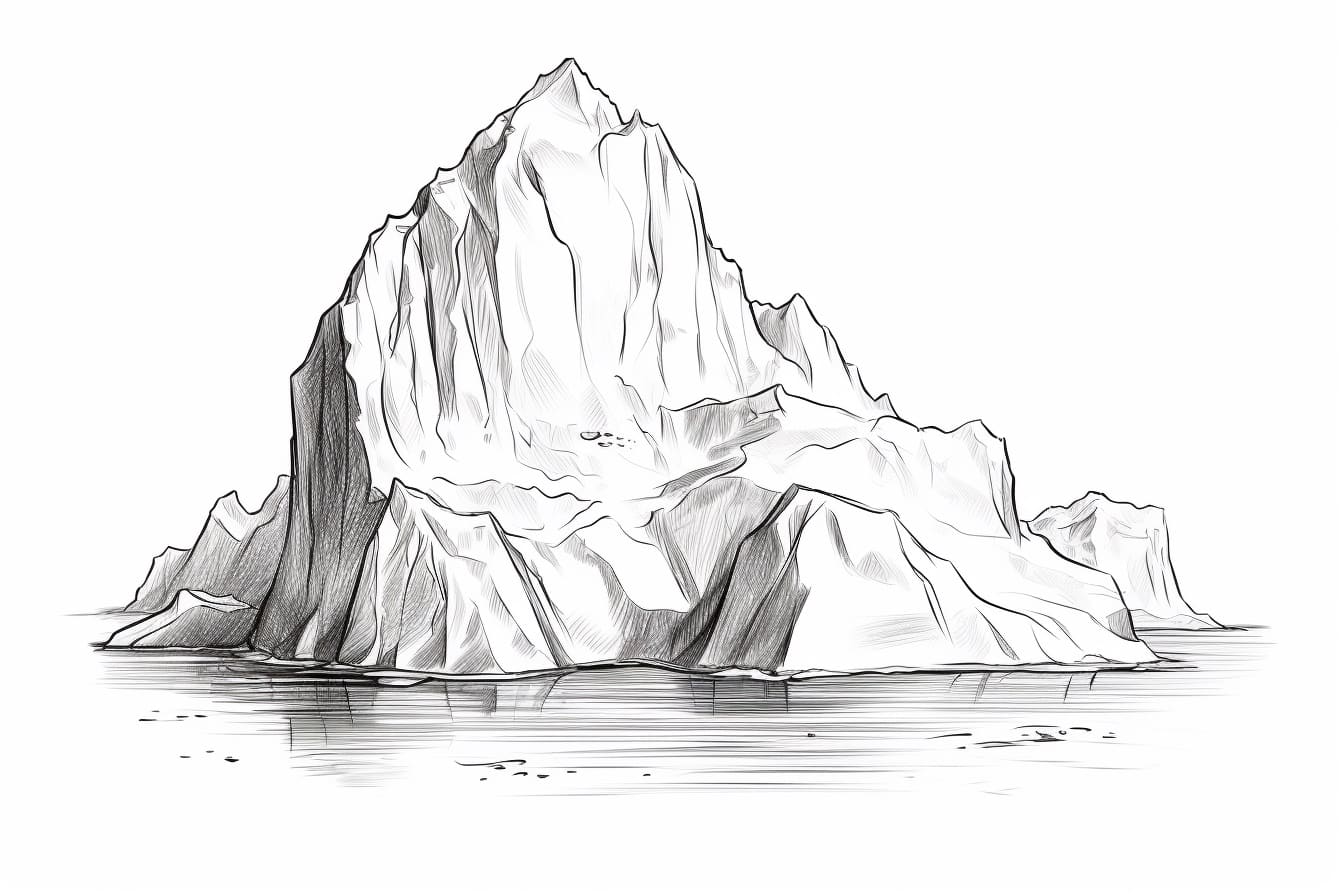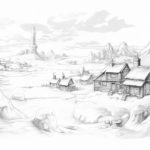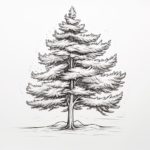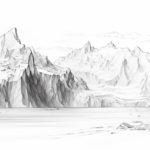Drawing icebergs can be a fascinating and challenging subject for artists of all skill levels. These majestic formations, with their hidden depths and glistening surfaces, offer a unique opportunity to explore contrasts of light and shadow, transparency and solidity. By capturing the intricate shapes and textures of icebergs, artists can convey a sense of both the beauty and the fragility of these natural wonders. In this guide, we will delve into the techniques and tips for drawing icebergs, from understanding their anatomy to mastering the play of light and shadow to create stunning and realistic representations. Join me on this creative journey as we uncover the secrets of bringing these icy giants to life on paper!
Materials Required
To draw an iceberg, you will need the following materials:
- Drawing paper or sketchbook
- Pencils (different grades for shading and detailing)
- Eraser
- Sharpener
- Ruler (for straight lines)
- Drawing pens (optional, for outlining)
- Colored pencils or markers (optional, for adding color)
- Reference image of an iceberg (for inspiration and accuracy)
How to Draw an Iceberg: a Step-by-step Guide
Step 1: Gather Your Materials
- Gather all the necessary materials for your iceberg drawing, including paper, pencils, eraser, and any coloring tools you plan to use.
Step 2: Start with Basic Shapes
- Begin by lightly sketching the basic shape of the iceberg using simple geometric shapes. Icebergs are irregular in shape, so focus on capturing the overall form rather than precise details at this stage.
Step 3: Add Texture and Detail
- Start adding texture and detail to your iceberg. Icebergs have a rough, jagged texture, so use short, overlapping lines to create this effect. Pay attention to the different layers and shapes present in the ice.
Step 4: Define Shadows and Highlights
- Identify the light source in your drawing and start adding shadows and highlights to give your iceberg dimension. Use darker shades for the shadows and lighter shades for the highlights to create a sense of depth.
Step 5: Refine and Add Final Details
- Refine the details of your iceberg drawing, paying attention to any unique features or markings that you want to include. Add any additional elements, such as water or snow, to enhance the realism of your drawing.
Step 6: Erase any Unwanted Lines
- Use your eraser to carefully remove any stray lines or sketch marks that are no longer needed. Clean up the drawing to make it look polished and professional.
Step 7: Add Color (Optional)
- If you choose to color your iceberg drawing, select appropriate shades of blue and white to capture the icy look of the iceberg. Use colored pencils or markers to carefully fill in the colors, blending where necessary to create a realistic effect.
Step 8: Final Touches
- Take a step back and review your drawing. Make any final adjustments or additions to ensure that your iceberg drawing looks complete and visually appealing. Sign your work if desired.
Step 9: Share Your Artwork
- Share your finished iceberg drawing with others to showcase your artistic talent and creativity. Consider framing it or displaying it in your art portfolio to inspire others with your work.
Conclusion
In conclusion, drawing an iceberg can be a rewarding and challenging artistic endeavor that allows you to explore light, shadow, and texture in a unique way. By following the step-by-step guide and practicing your observational skills, you can create a stunning and realistic depiction of this natural wonder. Remember to take your time, experiment with different techniques, and most importantly, have fun expressing your creativity through the art of drawing.
Fun Facts About Icebergs
- The largest recorded iceberg was about the size of Jamaica, measuring around 11,000 square kilometers.
- Not all icebergs are white! Some can appear blue or green due to the way light is absorbed and scattered by the ice.
- Icebergs can make unique sounds, such as cracking, popping, and hissing, known as “bergy seltzer.”
- The shape of an iceberg above the water is just the tip of the iceberg – about 90% of its mass is hidden beneath the surface.
- Icebergs can travel long distances, with some drifting thousands of kilometers from their calving glaciers.
- The term “bergy bits” is used to describe small icebergs that are about the size of a car or house.
- Icebergs are made of freshwater ice and can take on beautiful and intricate shapes, sculpted by wind, waves, and melting.
- The lifespan of an iceberg can vary greatly, from a few days to several years, depending on its size and location.
- Icebergs are a vital part of the ecosystem in polar regions, providing habitat for various marine species like krill and fish.
- The Titanic sank after hitting an iceberg in the North Atlantic Ocean in 1912, highlighting the dangers that these massive ice structures can pose to ships.
Suggestions for Scenes and Settings for Iceberg Drawings
- An iceberg floating in a serene Arctic ocean, surrounded by a flock of graceful seabirds gliding overhead.
- A close-up view of the intricate patterns and textures of an iceberg’s surface, showcasing the beauty of its natural formations.
- A dramatic scene of a colossal iceberg towering over a small fishing boat, emphasizing the contrast in scale between nature and mankind.
- An underwater perspective of an iceberg, capturing the shimmering blue hues and mysterious depths of the submerged ice.
- A peaceful sunset setting with an iceberg reflecting the warm colors of the sky, creating a harmonious and tranquil atmosphere.
- A whimsical illustration of a polar bear lounging on top of an iceberg, basking in the sun and enjoying the icy solitude.
- A fantasy-inspired drawing of an iceberg adorned with sparkling crystals and colorful gemstones, transforming it into a magical and enchanting spectacle.
- A futuristic interpretation of an iceberg in a sci-fi setting, featuring advanced technology and structures built around and on top of the icy mass.
- A surreal composition of an iceberg drifting through a dreamlike landscape filled with floating islands and mystical creatures.
- A dynamic action scene of a group of adventurous explorers scaling an iceberg, facing challenges and obstacles as they strive to reach the summit.









